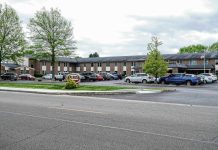While the Columbus housing market is changing, the shift is doing little to help those seeking affordable homes.
Based by the workload coming in to the Bartholomew County Assessor’s office, houses aren’t selling as fast as they were a year ago.
“Homes now spend more days on the market,” Bartholomew County Assessor Ginny Whipple said. “In addition, there have been some reductions in prices when a home didn’t sell and there aren’t as many sales.”
But that description refers to houses and properties that cost more than $300,000, Crossroads Association of Realtors President Bev Roberts said. Her organization serves 400 real estate agents in south central Indiana.
“Anything under $300,000 is still selling very, very quickly with multiple offers,”said Roberts, an agent with Century 21 Breeden Realtors in Columbus. “There’s a lot of apartments going up that will certainly provide more housing options in Columbus. But I’m not sure that will have an impact on home prices because the housing inventory remains extremely low.”
Interest rates
The interest rate hikes have created obstacles for the housing market, according to local real estate officials, with the most recent 0.25% rate boost bringing the benchmark range for mortgage interest rates to between 5% and 5.25%.
While that is the highest in 16 years, Roberts said she recalls when interest rates were at 18% in the 1980s.
“It’s going to take some time,” she said. “But buyers will eventually adjust to the mindset that they aren’t going to get 3% interest anymore,” she said.
Even if the Fed lowers interest rates, the result will likely be an increase in housing demand that will result in home prices rising further, Roberts said.
On May 4, Indiana Gov. Eric Holcomb signed House Bill 1005, which establishes the residential housing infrastructure assistance program and residential housing infrastructure assistance revolving fund.
One of the benefits will be the availability of grants to developers to help pay infrastructure costs on new development, according to Roberts.
A number of developers have slowed down construction of higher-priced homes due to lower demand caused by higher interest rates, she said.
“But if they find out about these programs and apply for those grants, it could help develop more affordable housing neighborhoods,” Roberts said.
Taxes and values
The changing housing market is having an impact on assessed values and property taxes. Whipple said she’s expecting an average 8% increase in gross assessed value for 2023 with taxes payable in 2024.
“The increase in assessments was due partly to sales and new construction last year,” Whipple said. “As the assessment goes up, the tax rate should come down.”
Gross-assessed values reflects a property’s value before qualified deductions, such as the Indiana Homestead credit, are considered. In contrast, net assessed value is determined after deductions are made.
Broken down into land usage, the gross assessed value for residential properties went up by about 8.5%, commercial property by 6% and industrial land up by 7% in Bartholomew County, Whipple said.
But the most significant increase can be found in the gross assessed value of Indiana farmland. Agricultural property in Indiana experienced the biggest one-year increase of any Midwestern state last year, according to the Federal Reserve Bank of Chicago’s quarterly AgLetter. Last year, farm real estate values in Indiana were up 12.7% from 2021, according to the U.S. Department of Agriculture.
When it comes to agricultural land, gross-assessed value in Indiana is determined on a five-year rolling basis in Indiana. Essentially, those doing the assessing take six years and remove the highest one, Whipple said.
The overall average 8% rise increase in gross assessed values is less than the average 10.6 % jump from 2020 to 2021, with property taxes payable last year, Whipple said.
The assessor stresses there are many variables involved in each parcel that might make values go up in one area and down in another, she said.
“I don’t know what this will do to our tax rate,” Whipple said.
But she also said there are not as many local property owners who want to challenge their property tax assessments, she said. That creates a better flow of revenue coming into the county’s coffers, according to county officials.
To date, 38 appeals have filed this year. Whipple said she expects about 150 appeals to be filed by the end of the year, compared to 180 appeals made last year.
Whipple said she believes there are fewer appeals because her staff is trained to adequately explain factors used in determining individual property taxes and values.





